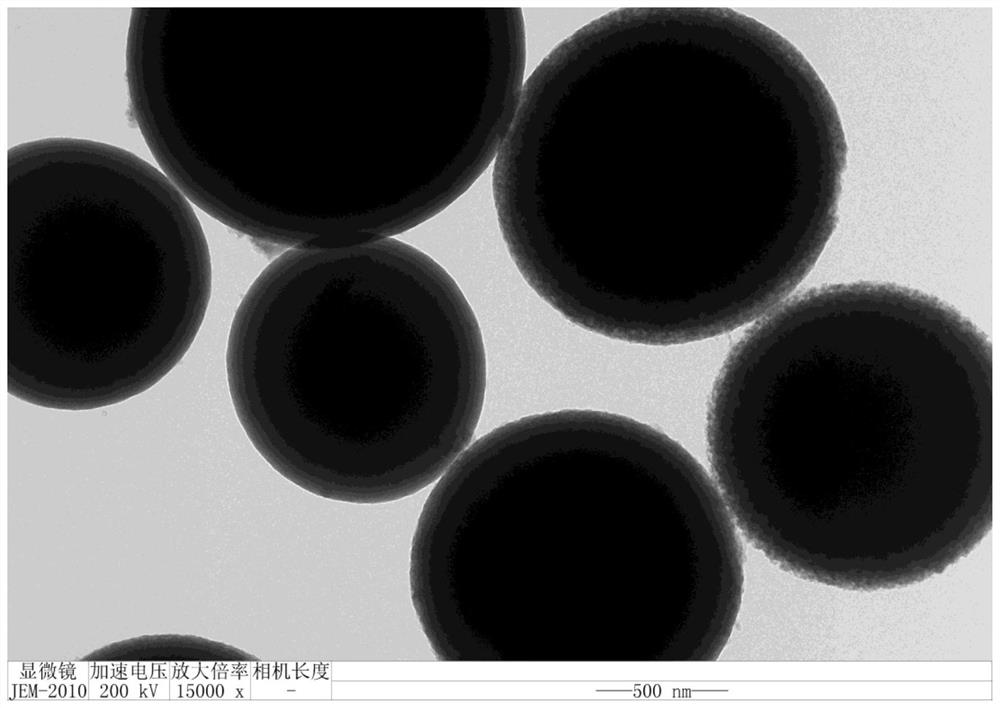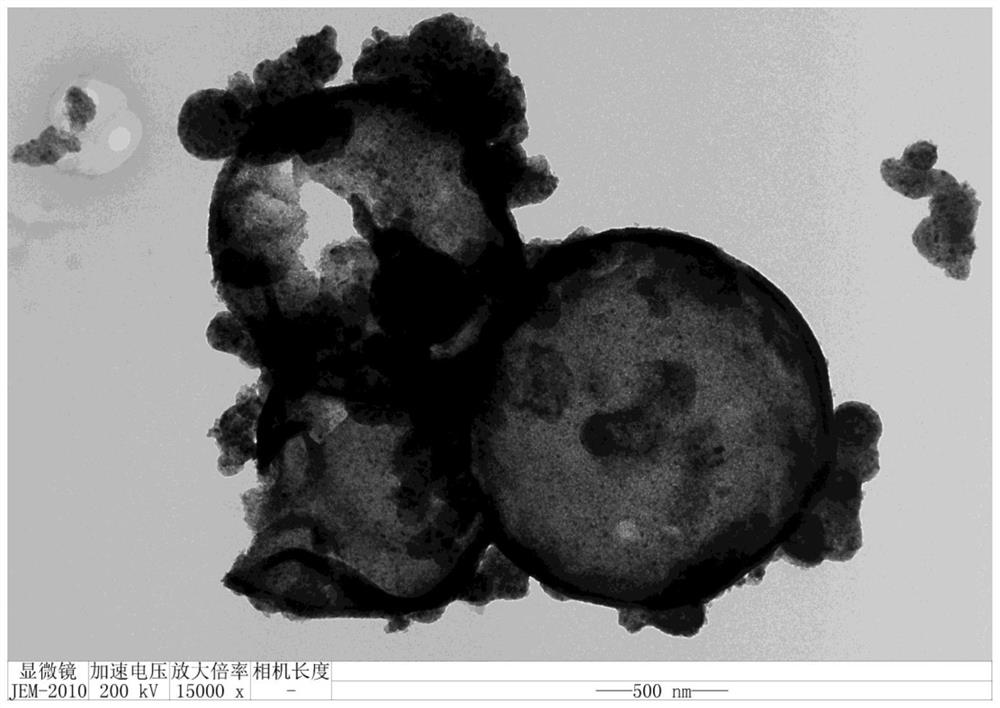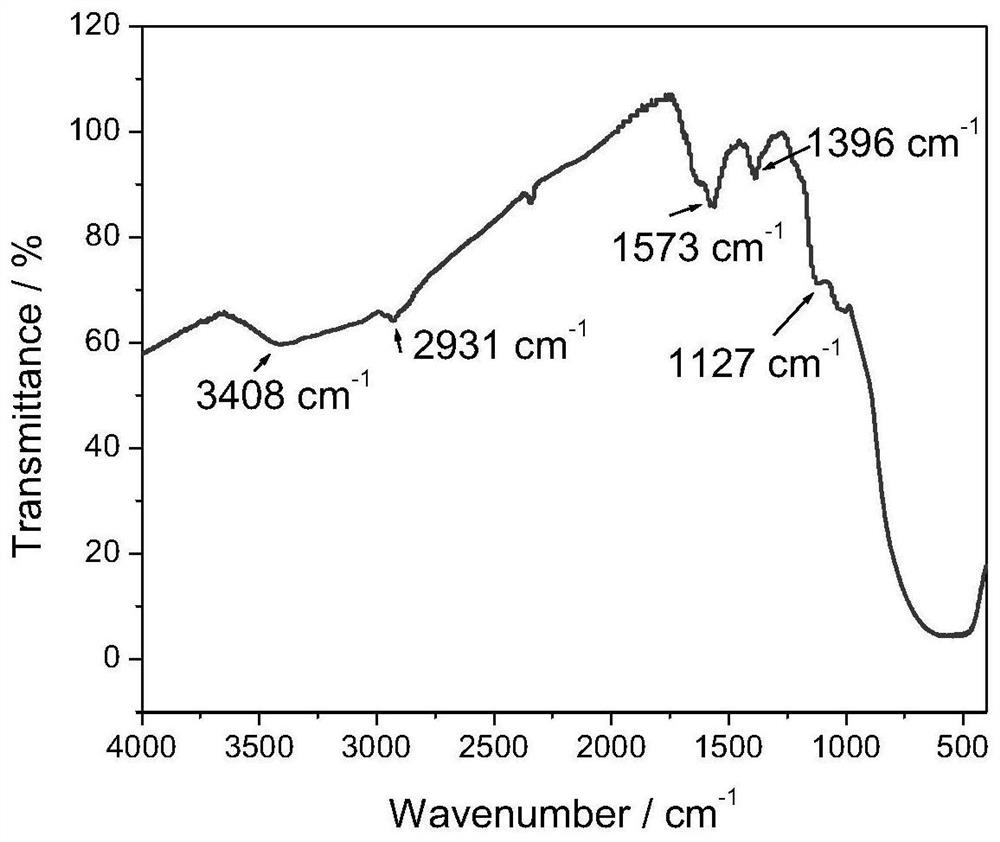A kind of photocatalyst, preparation method and use method thereof
A photocatalyst, photonic crystal technology, applied in chemical instruments and methods, physical/chemical process catalysts, chemical/physical processes, etc., can solve the problems affecting pollutant adsorption capacity and photodegradation efficiency, poor stability of composite catalysts, low specific surface area, etc. To achieve the effect of prolonging the fluorescence decay life, strong adsorption and capture ability, and large specific surface area
- Summary
- Abstract
- Description
- Claims
- Application Information
AI Technical Summary
Problems solved by technology
Method used
Image
Examples
Embodiment 1
[0027] 1. Preparation method of photocatalyst
[0028] (1) Preparation of carbon quantum dot solution
[0029] After heating 10mL of 3-aminopropyltriethoxysilane to 190°C, add 0.5g of citric acid, stir the reaction for 1min, cool to room temperature, then add 15mL of absolute ethanol solution dropwise to dilute, and after ultrasonic treatment for 5min, carbon The quantum dot solution was placed in a brown bottle and refrigerated at 4°C for later use.
[0030] (2) Preparation of carbon nanosphere template
[0031] Treat 0.01mol / L glucose solution with an ultrasonic cleaner for 10 minutes, then pipette 40ml into a polytetrafluoroethylene high-pressure reactor, and place it in an oven at 180°C for 6 hours, remove the reactor, and cool naturally to obtain black or dark brown Suspended liquid was suction-filtered and washed until the filtrate was clear, and then dried in an oven at 100°C to obtain a black nano-carbon sphere template, which was sealed for future use.
[0032] (3)...
Embodiment 2
[0048] Same as Example 1, the difference is:
[0049] 1. Preparation method of photocatalyst
[0050] (1) The heating temperature is 195°C; (2) The carbonization reaction temperature is 190°C and the time is 6.5h; (3) The temperature is raised to 550°C; (4) The amount of concentrated ammonia water is 0.16mL.
[0051] 2. Molecular identification and optical property analysis of photocatalysts
[0052] (1) The average particle size of carbon nanospheres is 810nm; (2) CQDs / TiO 2 The average particle size of the nanocomposite photocatalyst is 810nm; (4) the amount of the catalyst added is 30mg; (5) the concentration of the methyl orange solution is 15mg / L.
Embodiment 3
[0054] Same as Example 1, the difference is:
[0055] 1. Preparation method of photocatalyst
[0056] (1) The heating temperature is 200°C; (2) The carbonization reaction temperature is 200°C and the time is 7h; (3) The temperature is raised to 600°C; (4) The amount of concentrated ammonia water is 0.17mL.
[0057] 2. Molecular identification and optical property analysis of photocatalysts
[0058] (1) The average particle size of carbon nanospheres is 825nm; (2) CQDs / TiO 2 The average particle size of the nanocomposite photocatalyst is 825nm; (4) the amount of the catalyst added is 50mg; (5) the concentration of the methyl orange solution is 15mg / L.
PUM
| Property | Measurement | Unit |
|---|---|---|
| particle size | aaaaa | aaaaa |
| particle size | aaaaa | aaaaa |
| particle size | aaaaa | aaaaa |
Abstract
Description
Claims
Application Information
 Login to View More
Login to View More - R&D
- Intellectual Property
- Life Sciences
- Materials
- Tech Scout
- Unparalleled Data Quality
- Higher Quality Content
- 60% Fewer Hallucinations
Browse by: Latest US Patents, China's latest patents, Technical Efficacy Thesaurus, Application Domain, Technology Topic, Popular Technical Reports.
© 2025 PatSnap. All rights reserved.Legal|Privacy policy|Modern Slavery Act Transparency Statement|Sitemap|About US| Contact US: help@patsnap.com



